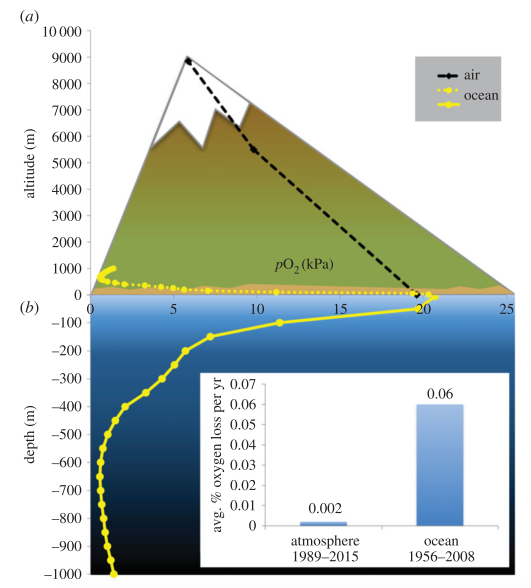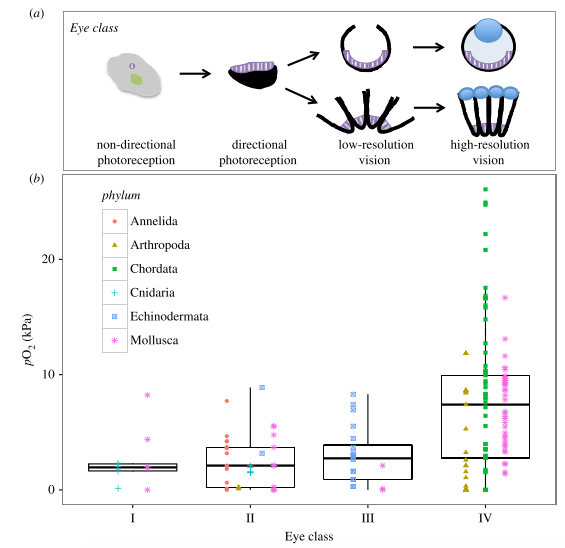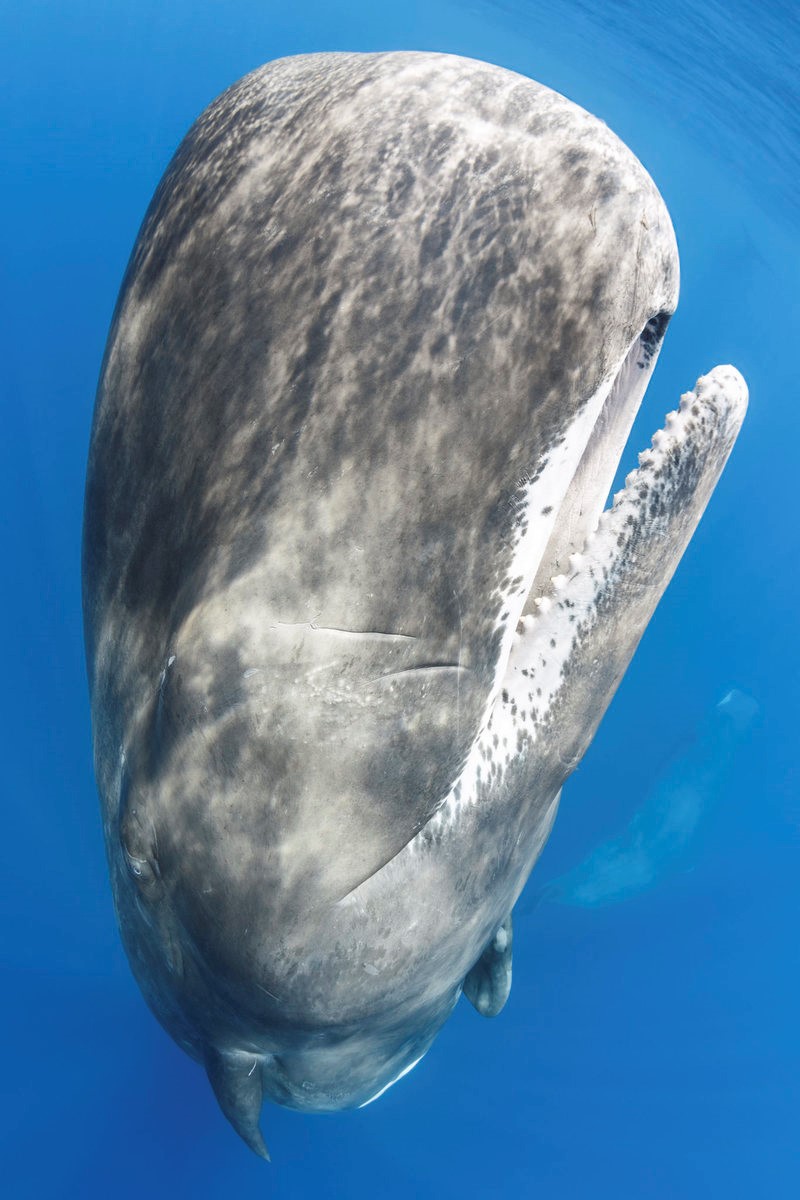Introduction: Oxygen in Seawater
To many people, climate change and global warming mean the same thing. However, climate change involves much more than just temperature increases – in fact, there are many other shifts happening at the same time. Think of climate change as having three major components: temperature change, pH change (aka ocean acidification), and oxygen level change (aka deoxygenation)- with the latter being our topic for today.
Oxygen is crucial to ocean life – even though they don’t breathe air, they still “breathe” the oxygen dissolved in seawater. Oxygen comes into seawater through wind and waves at the ocean’s surface and through photosynthetic organisms (plankton, seaweeds, etc). Then, that oxygen is used by every ocean animal, from the largest shark to the smallest microbe, to power their metabolisms. Animals break down the oxygen, which releases energy to keep their muscles moving, their stomachs digesting, and their reproductive organs functioning.
Oxygen concentration in the ocean exhibits a distinct pattern. At the surface, the oxygen is high – wind action happens at the surface, and plankton and seaweed need to be close to sunlight to photosynthesize. However, there are fewer photosynthetic animals producing oxygen and many more animals using the oxygen in the deeper ocean, which causes a sharp decline in oxygen concentration with depth (Figure 1).

With climate change, oxygen in seawater is decreasing – by 2% since the 1960s. Warmer seawater cannot “hold”, or dissolve, as much oxygen as colder seawater; as a result, warming trends correspond to decreases in oxygen. That 2% may not seem like much, but this decrease in oxygen may cause changes in animal metabolisms, compress habitats, and alter food web dynamics. One major metabolic system that has been and will continue to be affected is vision.
The Cost of Vision
Vision is an energetically “expensive” process. It takes a lot of energy (created by breaking down oxygen) to power the eyes of animals. Eyes have two major types of cells: photoreceptors, which sense light, and neurons, which translate information back to the brain. If those cells don’t receive enough oxygen, photoreceptors stop sensing light and neurons can be permanently damaged.
There are four major classes of eyes found in marine animals ranging from the simplest light detector (Class I) to the complex, high-resolution vision similar to ours (Class 4). As the eye gets more complicated, it demands a higher minimum level of oxygen to function properly (Figure 2).

Vision has a lot to do with the animal’s life history and habitat. For example, a sea star has very basic eyes that are able to do basic phototaxis (sense lightness or darkness) and not much else; they can’t see shapes or colors. They don’t move quickly and they’re largely stationary in their habitats, so they don’t need more complex eyes than what they have. In contrast, a squid or a fish has eyes that see similar to how a dog sees. Those animals are visual, often very fast-moving predators, so their well-developed eyes make sense for their lifestyle – but those eyes demand more energy.
What happens to eyes when the oxygen levels decrease?
When eyes are exposed to hypoxia (low oxygen), different things happen inside the body that decrease the ability to see. Human pilots who spent time in high-altitude/low-oxygen areas showed a reduction in their night and color vision abilities. Without enough energy (oxygen) to power the photoreceptors, those cells weren’t able to sense the same quantity and quality of light, leading to impaired vision. For many of the ocean’s animals that live in various levels of darkness, this could be a major problem.
In other cases, low oxygen conditions cause the neurons in an eye to stop transmitting messages to the brain, effectively decreasing the animal’s sight ability. (Much like when you send a text somewhere where there’s no service – no one gets the message if it can’t send!) More troublingly, studies on mice eyes have revealed that if the animal continues to be in hypoxia, it can’t regenerate key visual pigments – but, the ability to do so returns once the animal returns to normal oxygen levels.
What larger effects could happen?
Being in hypoxic regions can influence animal behavior, distribution in a habitat, and food web interactions. Vision plays an important role in all three, starting at the individual animal level and moving up to the entire ecosystem.
Individual animals may have trouble seeing as those physiological changes happen to their eyes. Additionally, their offspring may be affected – animals that incubate or grow up in low oxygen conditions often suffer from delayed hatching or eye deformities. For example, in a study of zebrafish larvae exposed to low oxygen, 18% of the hatched embryos did not have eyes, 14% had smaller eyes, and 31% had only one eye. It’s not hard to “see” why that would be difficult for the animal’s survival!
Zooming out from the eye to the whole animal, different behaviors may be affected by reduced vision quality. Feeding behavior, for example, often relies on sight. Animals affected by low oxygen may not be able to attack their prey as successfully, or may not even see that the prey is there at all. Studies have shown that low oxygen causes a reduction in feeding – for example, one species of flounder showed a 64% decrease in predation success when in low oxygen. Other behaviors, like signaling to other animals, camouflage, or finding a mate, haven’t been investigated yet but could be affected as well.
More broadly, food web dynamics may be altered. Predators could end up changing their prey because they can no longer tolerate low levels of oxygen, or because they can’t see their prey as well anymore. If the predators move to shallower waters for the higher concentration of oxygen, they may end up becoming prey for another predator, changing the food web.
What can animals do to adapt to low oxygen?
Many animals do have adaptations already that serve them well in periods of low oxygen. For example, when the oxygen concentration drops below a critical level, one species of carp actually shuts down its vision system. Shutting down that system allows the carp to allocate the energy to absorbing as much oxygen from the water as possible. Other animals, like turtles, enter a semi-comatose state when in low oxygen to accomplish the same goal. Of course, this isn’t a permanent solution, so adaptations would have to emerge over time.
Other animals, like those that migrate from the ocean to rivers to mate, change the sensitivity of their eyes to adjust for different light levels. Much like a human will take off their sunglasses to go inside, salmon moving from the relatively “bright” ocean to the relatively “dark” river (dark because of suspended sand and dirt) alter the sensitivity of their photoreceptors. Knowing that this ability has evolved in these fish means that other animals could possess the ability as well.
So, what’s going to happen?
We don’t know how all this is going to play out in our oceans – not enough work has been done to investigate what happens to vision under climate change scenarios. Scientists are working on experiments involving multiple stressors (for example, low oxygen AND higher temperatures) so that we can better understand how all of these climate change factors are going to affect animals.
Engage: Think about how your everyday life would be harder if you weren’t able to see as well. Ask a friend with glasses to describe how hard it is to do everyday tasks without their glasses on and that will give you an idea!
Hi and welcome to oceanbites! I recently finished my master’s degree at URI, focusing on lobsters and how they respond metabolically to ocean acidification projections. I did my undergrad at Boston University and majored in English and Marine Sciences – a weird combination, but a scientist also has to be a good writer! When I’m not researching, I’m cooking or going for a run or kicking butt at trivia competitions. Check me out on Twitter @glassysquid for more ocean and climate change related conversation!


